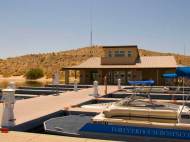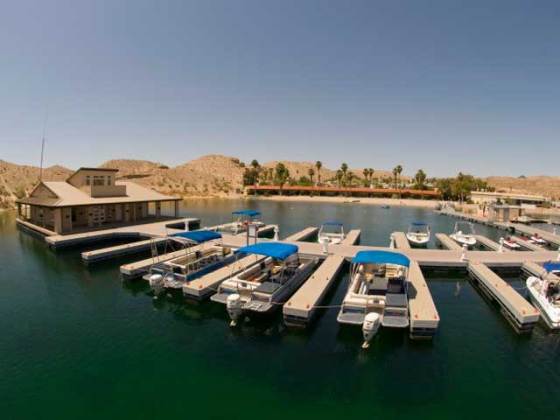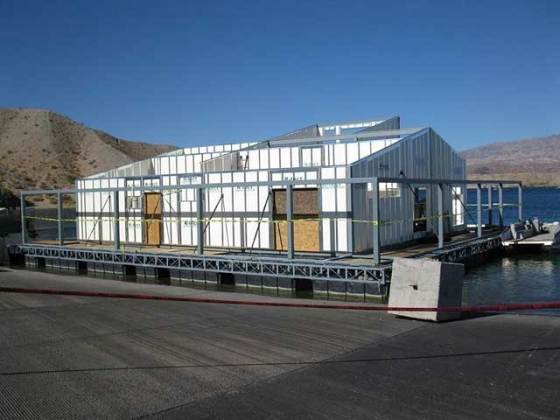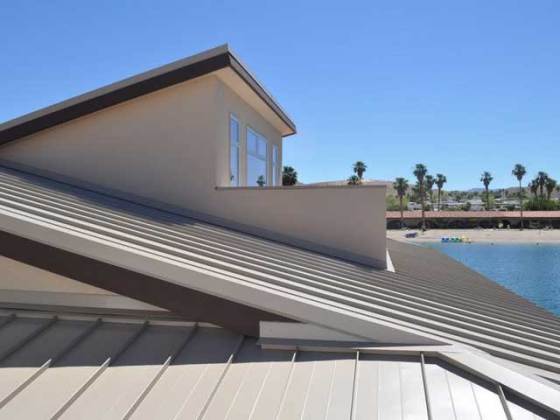Green architecture – Cottonwood Cove Floating Marina
 Scottsdale-based Forever Resorts formally announced the development of its new marina building at Nevada’s Cottonwood Cove Resort & Marina on Lake Mohave, just outside Searchlight, Nevada. The marina building replaces the old 30-year-old structure and moorage for more than 220 vessels, and it is the first floating structure that has applied for LEED Gold certification.
Scottsdale-based Forever Resorts formally announced the development of its new marina building at Nevada’s Cottonwood Cove Resort & Marina on Lake Mohave, just outside Searchlight, Nevada. The marina building replaces the old 30-year-old structure and moorage for more than 220 vessels, and it is the first floating structure that has applied for LEED Gold certification.
Designed by Carlson Studio Architecture, Cottonwood Cove Floating Marina is a 185 square-meter (2,000 square-foot) structure on a custom fabricated floating dock system on Lake Mohave. The project is part of Cottonwood Cove Resort in the Lake Mead National Recreation Area and provides rentals for personal watercraft and houseboats. Additionally the marina building provides dry storage and boat repair service as well as restrooms to guests.
The floating eco-friendly structure features sustainable modular construction and state-of-the-art energy-efficient and environmentally responsible materials and fixtures. Its structure is made out of modular K-tect Sustainable Building Systems which offer cradle to cradle sustainability, are chemical free, mold and moisture resistant, insect resistant, fire resistant and allow near zero air infiltration with no off-gassing.
K-tect energy efficient, prefabricated structural metal stud building systems integrate insulation and eliminate thermal bridging. Made of two extraordinarily reliable and effective construction materials – light gauge structural steel and expanded polystyrene (EPS) insulating core – K-tect systems provide ultimate thermal efficiency, enhance durability, and improve cost savings.
The building is yet to be equipped with solar panels, and it has special lighting features and windows that enable natural light to enter work areas and reduce energy consumption by 40 percent. The building maximizes its north-south orientation for abundance of natural daylight and views to the outdoors throughout. The non-potable lake water is used for flushing toilets, while the waste will be collected in a septic tank and released into a land-based leachate field.
Decking is made of a composite of rice hulls and recycled plastic, which is produced in Arkansas where the hulls were being disposed in landfills as a waste product. The exterior stucco is made of a waterproof, liquid paste derived from recycled tires. The paste with incredible insulating abilities was applied to a fiberglass mesh that held it in place while it dried.
The floor of the office is built of a plywood-like material called Nyloboard made from remnants of recycled carpets with a polyurethane skin. Use of low or no volatile organic compound materials, paints, adhesives, caulks and sealants ensure healthy indoor air quality.












Leave your response!